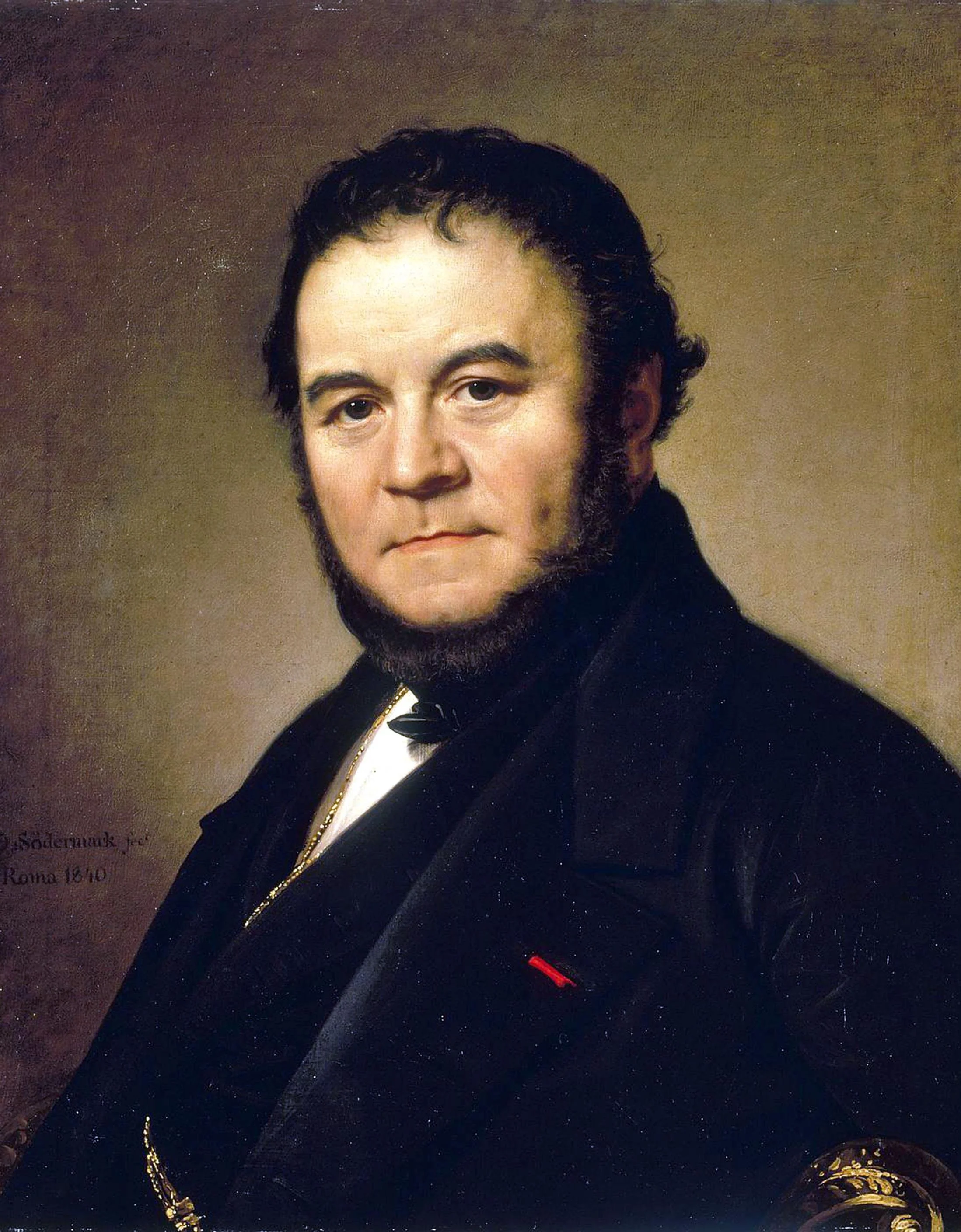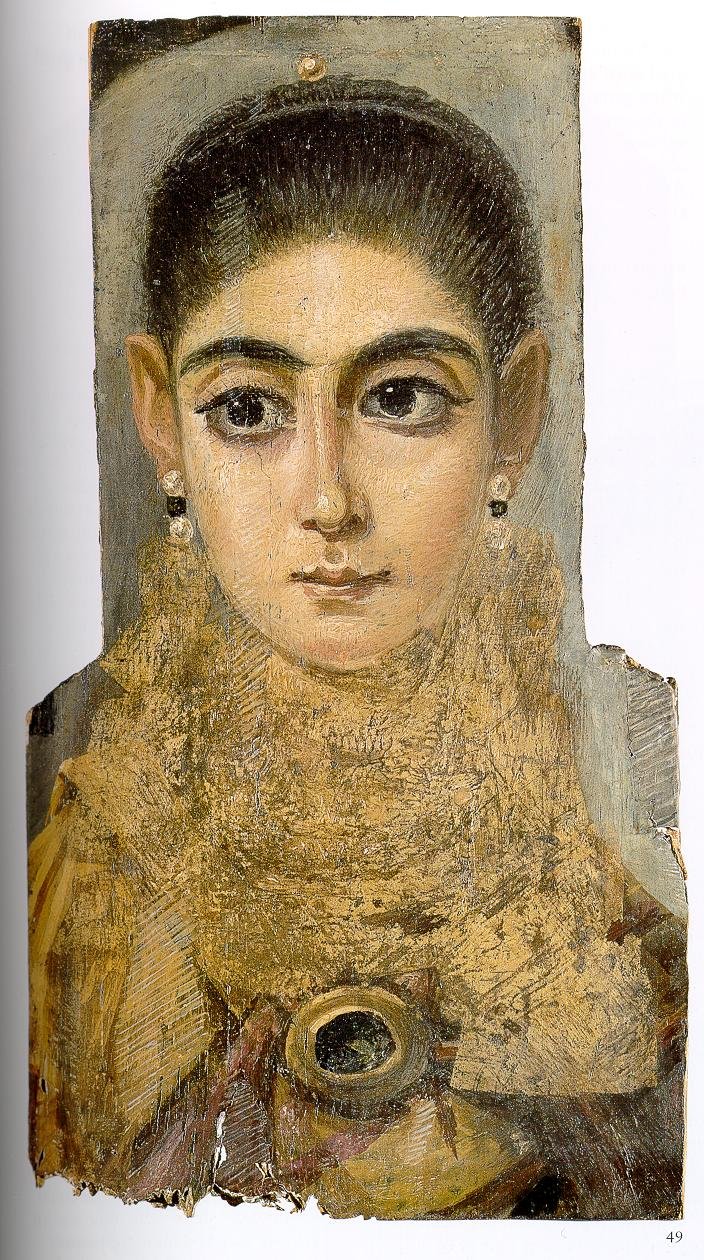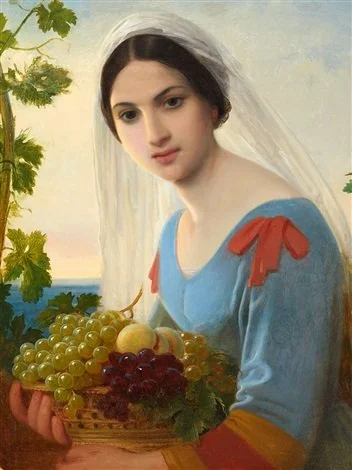Olof Johan Södermark (1790-1848)
Young Woman in Traditional Italian Costume, c1830
Oil on Canvas, Unfinished
Size: 605 x 480mm
£8000.00
Olof Johan Södermark was born in 1790 in Landskrona. He showed an early aptitude for drawing and became a cadet at 13, serving in the fortification corps, before enrolling at the military academy in Stockholm in 1805. Three years later he and his classmates had joined the Swedish army, presumably to replace officers lost in the early stages of the Napoleonic Wars.
He received a commission as a 2nd lieutenant, producing maps, topographical studies, and developing his eye and memory to the point that he could rapidly map out a section of land several miles in distance, even when marching.
He fought at the Battle of Leipzig and Grossbeeren in 1813, and avoided death in the Norwegian uprising of 1814 when his drawing materials deflected a musket shot. He received a gold medal from the King for his part in coordinating the Swedish advance across the river at Tistedalen , as well as a promotion to captain. Two years later he was a major and by 1820 had received a knighthood from King Charles XIV John, previously the French Marshall Jean Bernadotte, who routed the Swedish army at Lubeck in 1806, but treated the prisoners with such humanity as to become their king just a few years later.
Though Södermark officially retired from active duty in 1833, his military career seems to have matured into a comfortable absence in the 1820s. He taught drawing at the military academy, but just for a term. Between 1824 and 1828 he travelled to Paris and later Rome; an invitation from the sculptor Johan Niclas Byström (1783-1848) introduced him to the realities of artistic life and to the small colony of Swedish artists and writers living in the eternal city.
His time in Munich (c1832-1834) coincided with Prince Otto of Bavaria becoming King of a newly independent Greece and a resulting current that sought to paint classical civilisation in the academic style. Södermark seems to have worked tirelessly during this period, aggravating his already poor health by painting outside in the winter months and decades before the plein-air movements of the 1860s.
Before his premature death in 1848, he took to artistic life with the zeal of a latecomer. His initial training came as a sculptor, the last remaining lucrative niche for an artist in Rome. Printmaking briefly held his attention, but it was in portrait painting that he could successfully apply his skills as a draughtsman.
His free and confident under-drawing is generally concealed in finished compositions. Some of these were paid commissions, as in the King and Queen in 1831; but others were of close friends and literary acquaintances. He painted the Swedish lyric poet Karl August Nicander in 1827 and the female writer and reformer Fredrika Bremer in 1843. Perhaps most impressive is his portrayal of the writer Stendhal (1840), the arch-realist that had opined as early as 1824 that western painting was “on the eve of a revolution…”.
Stendal and Södermark seem to have found common ground, partly because both served as officers in the Napoleonic wars, but also from a belief in the same artistic ideals. The penname of “Stendal” came from the birthplace of Johann Joachim Winckelmann, the German pioneer of Neoclassicism.
Södermark’s portrait bears a striking resemblance to the Egyptian “Fayum” portraits, the remarkably-realistic portrayals of live models, which were attached to mummified bodies in the sarcophagus. They replaced the death masks of earlier periods and reflect the encroaching influence of Hellenic aesthetics on a civilisation that had succumbed to Greek and Roman rule in the years leading up to the birth of Christ.
In 1827, the archaeologist Leon de Laborde (1807-1869) brought two of them back to Europe. One went to the Louvre, the other found its way to the British Museum. Another entered the collection of the Louvre in 1826, having come from the collection of the Egyptologist Henry Salt (1780-1827), formerly the British consul in Cairo. The arrival of these portraits in Paris coincides with Södermark’s 1st period in the French capital.
“This unfinished portrait of an Italian girl is a work by Olof Södermark painted during his stay in Paris c1837, certified by Gustaf Jaensson.”
Gustaf Jaenson
Gustaf Jaensson (1891-1981) was an artist and conservator that worked at the Swedish National Museum and various royal palaces, before becoming the conservator at the Academy of Fine Arts in 1928 and to the King in 1941. He was a talented artist in his own right and this insight, combined with a close proximity to great masterpieces made him uniquely qualified to distinguish authentic works from the many forgeries then rife in the Old Master market of the 1940s.
Provenance
Daughter of the artist Maria Louisa Södermark (1818- 1888), who married Carl Thorsten Örtenblad (1817- 1855). Their daughter Carolina Örtenblad (1856-1926), married to Carl Fredrik Åkerström (1845-1901). Inherit- ed by Thorsten Åkerström (1879-1948), by descent to his son Jan Olov Åkerström (Unknown -2014).
Italienare - Olof Johan Södermark (1790-1848) Oil on Canvas, 62.5 x 50cm
Private Collection (Untraced)
Regina - Olof Johan Södermark (1790-1848) Lithograph
National Museum, Sweden
Bequeathed Per Södermark (1822-1889)
Stendhal - Olof Johan Södermark, 1840 Oil on Canvas, 62 x 50cm
Palace of Versailles
Portrait of a woman, known as L’Européenne” AD 100-150
wax paint and gold leaf on cedarwood Collection Louvre
Vignarola - Olof Johan Södermark (1790-1848) Oil on Canvas 62.5 x 50cm Stockholms Auctionsverk 05/12/2018
Regina. Roman Girl with Choral Necklace and Earrings Oil on Canvas
Olof Johan Södermark (1790–1848)
Nationalmuseum, Sweden







